In his various positions, Professor Emeritus Bob Rogers laid down the stepping stones that student journalists at Texas A&M walk today, carving a transformative path when he helped merge The Battalion with the Department of Journalism in 1975. Each step he took was a bold stride towards advancing journalism and the young reporters at A&M.
He passed away on July 4 at 96 years old. Services for his funeral have not been announced yet, but many of his former students took to Facebook to share their fond memories of Rogers, including former Battalion staff and professor Angelique Gammon.
“When I think of Bob Rogers, I think of the time he moved into Student Media and effectively brought Student Media into the journalism degree,” Gammon said. “The first thing people say is, ‘I owe everything in my professional career to that man,’ and I’m right there with them.”
In 1968, he was hired part-time as a professor while completing a master’s degree in political science. Newsrooms turned into classrooms as he brought two decades of newspaper experience from his time with the Waco News-Tribune, Times-Herald and Austin American-Statesman. Many of his students mentioned how during that time, the biggest impact on their writing was their professors. Through media law and his editing class, Rogers built a strong foundation, and his students said they still remember important information about the free press, rights and wrongs and how journalism is the only career called out in the Constitution.
Douglas Pils, who served nearly a decade as the general manager of A&M Student Media, said he believes the strong output of student journalists for nearly three decades was due in part to Rogers’ influence and teachings.
“The journalism department from the 1970’s to probably 2003 would not have produced the journalists it did if it was not for Bob and his advanced knowledge in this career,” Pils said. “He had practiced journalism at the highest level there was, and me learning from Bob played a big part in my life.”
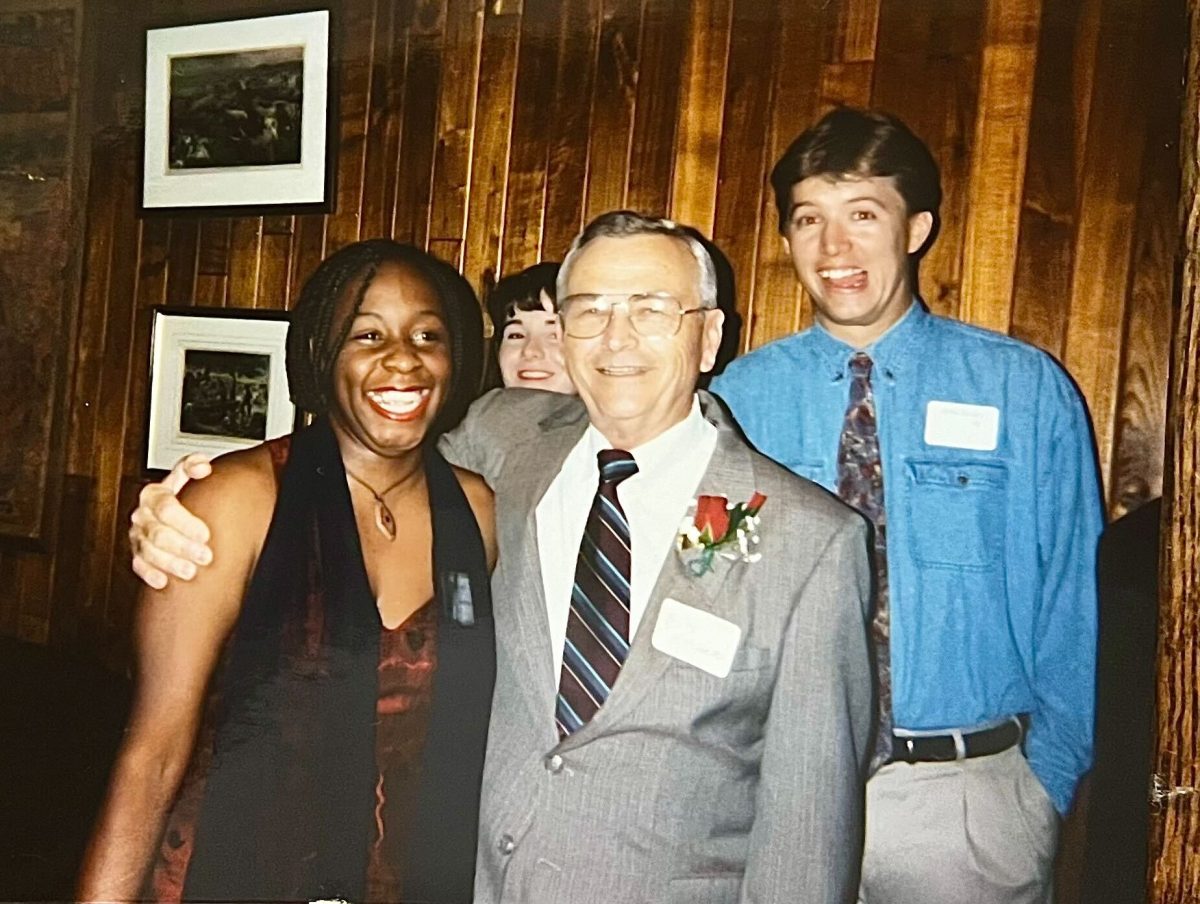
By 1970, Rogers left Texas A&M to serve as the department head at the University of Wyoming, only to return in 1974 to continue offering his guidance and sharing his expertise. His dedication quickly elevated him to head of the journalism department in 1975, when he was appointed chairman of the Board of Student Publications.
“Don’t think you can underplay how important he was to Texas A&M journalism’s impact on the world of journalism,” Pils said. “To me, it starts and ends with Bob Rogers’ influence he had on so many different people.”
Lyle Lovett graduated from A&M in 1979 and received his bachelor’s degree in languages and journalism. He is now nationally known for being a country singer, composer, producer and actor. Lovett said the first time he met Rogers was in The Battalion’s office, and he had a reassuring presence — the same presence many of his other students mentioned. He remembers Rogers as a “wise man” whose legacy still continues through what he taught to the students fortunate enough to have him as a professor and a mentor.
“As a father, I think about Rogers and how he fostered us and gave us confidence,” Lovett said. “Those qualities as a teacher and mentor are qualities I hope to have as a father.”
Rogers’ influence grew steadily. Pils mentioned he always had ideas for new stories and how to make them better. In 1981, he was honored with a faculty distinguished achievement award in Student Relations. His ability to push students and not allow them to give up transformed journalism. Former students said Rogers always knew how to push people who were going down the wrong path and was there for them through tough times. His influence at A&M helped transform it into an educational cornerstone, fostering a dynamic environment where students could hone their craft.
The most noticeable thing about Rogers was his innate ability to always know when students were struggling and how to help them. He advised students to write their own stories and follow their passions, and throughout the years, it has led to esteemed editors at large newsrooms, successful photographers, famous singers and award-winning writers.
Rogers used to come into the newsroom and hum the theme song of the TV show “My Three Sons.” As he walked, Lovett said he couldn’t help but add a bit of choreography to his stride — a playful shuffle or a little jig — turning the mundane newsroom routine into an impromptu performance. His dance was not just for show; it was his way of injecting a dose of joy and creativity into the otherwise serious environment of news production.
“He walked into a room and took it over, and everyone in the room was drawn to him,” Lovett said. “He had a wonderful sense of humor, and he got right to the point — and his kindness showed in everything he did.”
Loren Steffy, author and contributor to Texas Monthly, said his first interaction with Rogers was holding up his glasses, tilting them and asking him if nine hours was too much to sign up for as a freshman. Rogers — affectionately called “Rog” — helped improve his writing tremendously, Steffy said. When something caught his eye, he would always offer an opinion or critique for how to improve it.
“Rog would impart his wisdom in a very odd and quirky way, and you didn’t feel like he was lecturing you in any way,” Steffy said. “He was always watching us.”
The newsroom’s rhythm reached its peak every Friday afternoon with the ritual known as “400,” a dedicated time when The Battalion staff voluntarily gathered for an intense editorial review session. Rogers, ever the meticulous editor, would mark up all the papers, going through them story by story.
“The message I realize now looking back on my career is that he was trying to teach us that in journalism, we are defined by our words,” Steffy said. “Everything that follows your byline speaks to your reputation and it matters. It reflects on you, and you should care.”
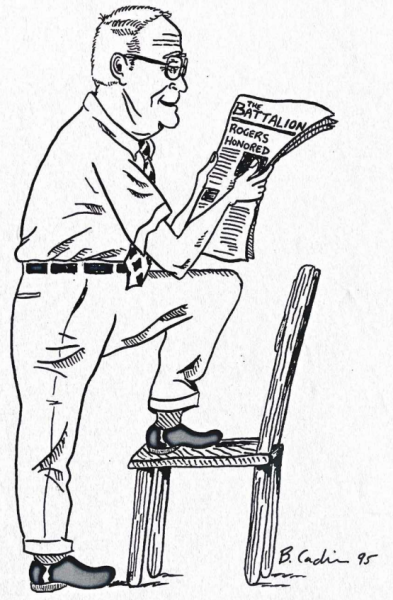
Most of his students fondly recalled the peculiar, made-up words he muttered as he read through papers, his red pen scribbling corrections and comments on every piece of writing. Rogers was known for his open-door policy and was always available for guidance and feedback. He could always be found at The Battalion office, where his presence was as constant and reliable as an old grandfather clock.
“When you spoke with Bob Rogers, he acted like there was nothing else in the world but you,” Lovett said. “In this huge world we find ourselves in, you don’t expect that connection. What a wonderful surprise it is to have that.”
Steffy said how Rogers always mentioned that words matter. One time, when writing an article about Klansmen marching the streets of Houston, he wrote something along the lines of, “How long will we allow the Klan to spew its racism?” Rogers answered and said, “Steffy wants to know how long we will tolerate the Klan.”
Debby Krenek, who is now the publisher of Newsday, served as one of the very first female editor-in-chiefs of The Battalion in 1978. She said he taught her how to write a good story and headlines, which made her and others ready to take on journalism as a profession.
“He demanded excellence, and we would put out the paper, and he would come in and hold the paper and it was all marked in red,” Krenek said. “What we slowly but surely realized was that you learned from every single thing that he told you, and it was quite an amazing experience.”
She mentioned that during her time at A&M, the journalism department was small, but it was Rogers’ passion, the students and his push for hands-on learning that made her apply to the school.
He retired as professor emeritus in 1985, transitioning to the role of editor of The Eagle but still staying in the Bryan-College Station area. Eventually, his passion for journalism, education and especially his students drew him back to the university in 1988, where he resumed his role as department head. After an illustrious 50-year career in journalism with over 20 years dedicated to A&M, Rogers retired for the last time in 1995. The legacy he imprinted on his successors was so impactful that students named a Fish Camp in his honor.
Paul McGrath, assistant news editor at the Houston Chronicle, was a member of the Class of 1977. He said Rogers taught him and a number of colleagues to be “newspapermen.” Twenty years later, Class of 1993 students like Dave Thomas were still being taken under Rogers’ wing. Thomas is a writer for the Texas Health and Specialty Care System and said Rogers’ endorsement allowed him to receive a job at a small West Texas newspaper that gave him a 25-year journalism career.
Kelly Brown, assistant vice president of the Division of Marketing and Communications at A&M, said that in 2000, Rogers’ former students raised funds for an endowed scholarship in his name for people passionate about becoming journalists after college.
His work lives on through his students, who are spread out in different journalism fields across the nation. At A&M, it lives on through The Battalion’s students, with the mindset of, “Get the story, get the facts, get all sides of it and be fair,” as Rogers would say.
To make an impact on Texas A&M Student Media the same way that Bob Rogers did, visit our “Support Student Media” section on The Batt Online to learn more.
The following images are from a pamphlet put together in 1995 by Rogers’ then students and his alumni, celebrating his retirement and 50-year journalism career.



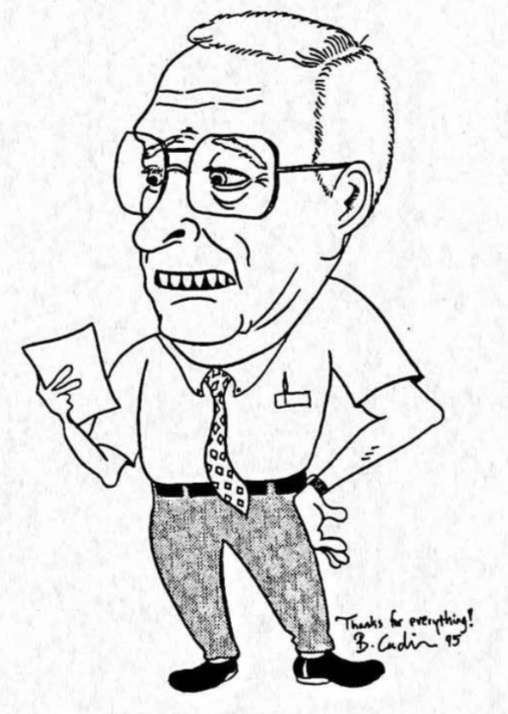
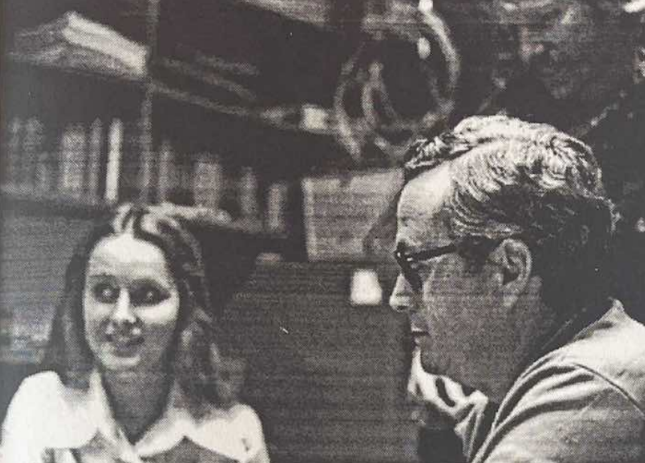
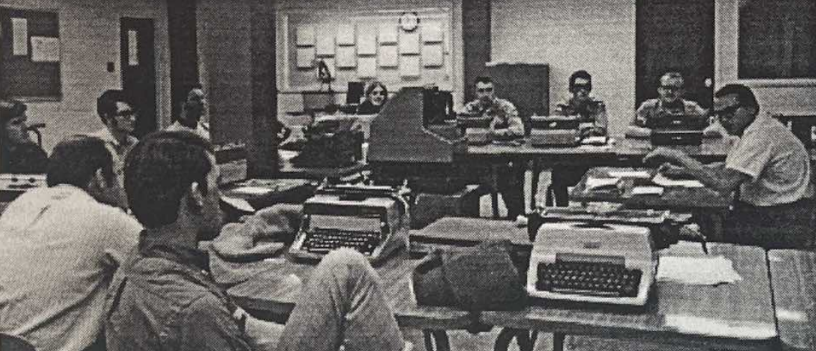
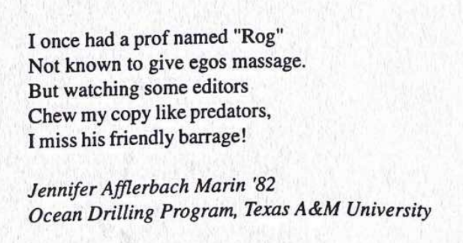
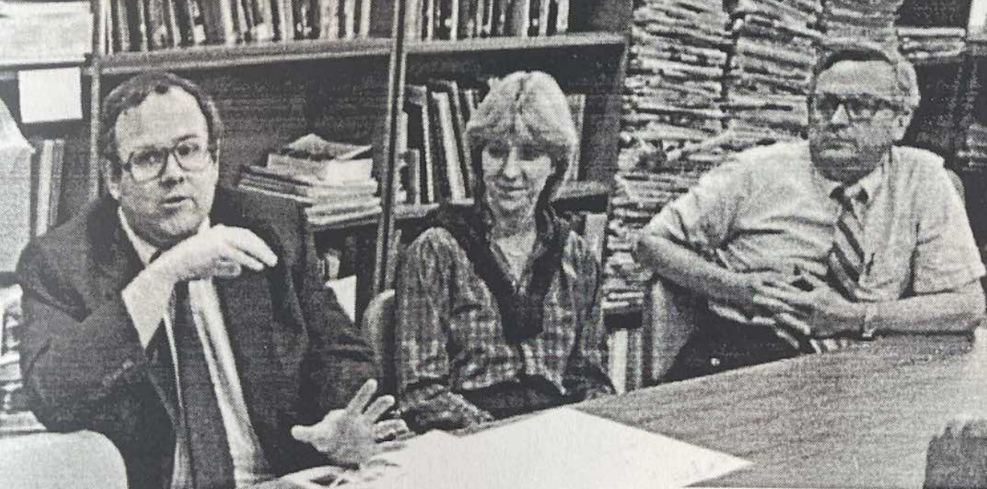
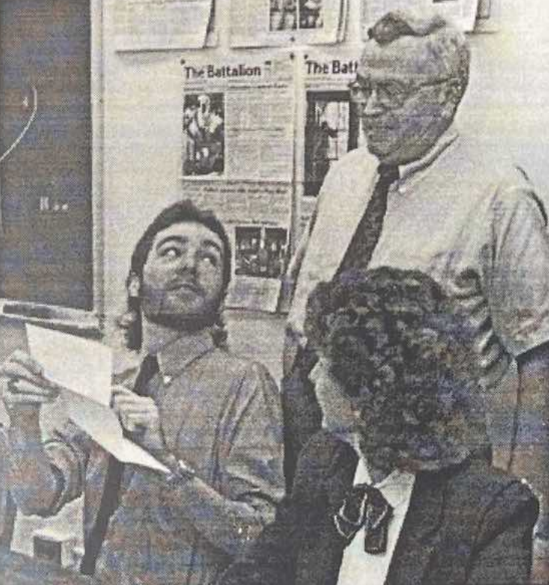
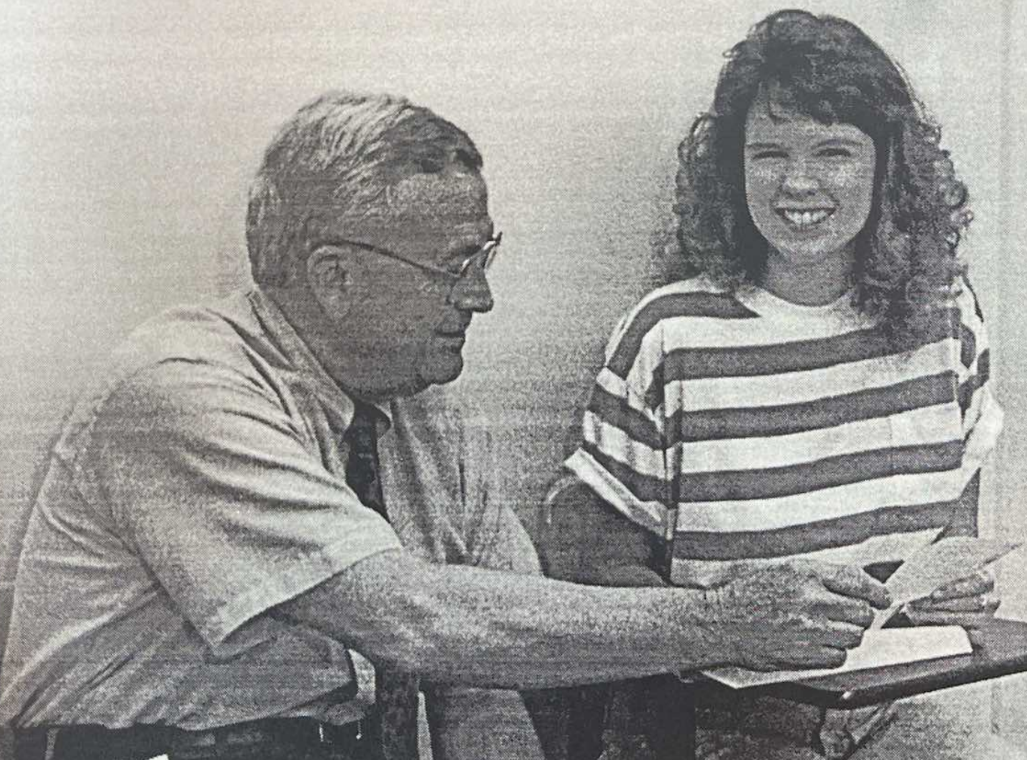
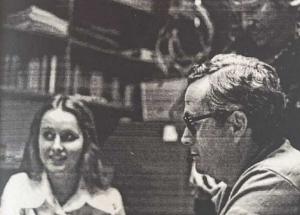
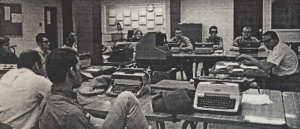
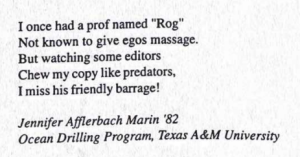
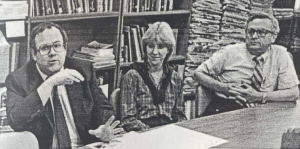
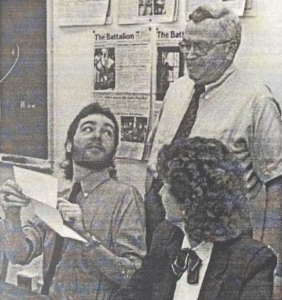
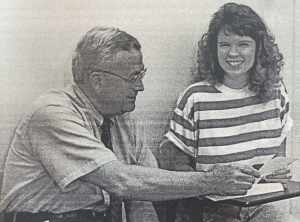
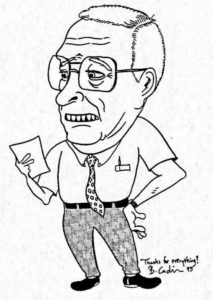
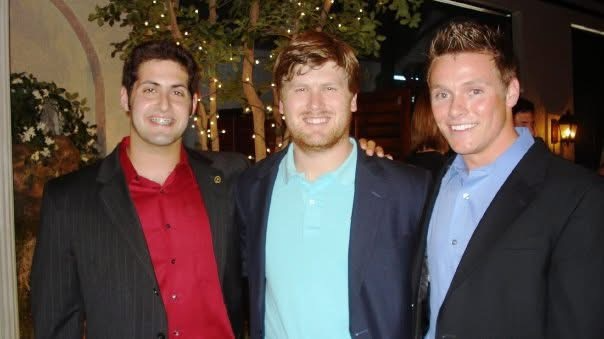
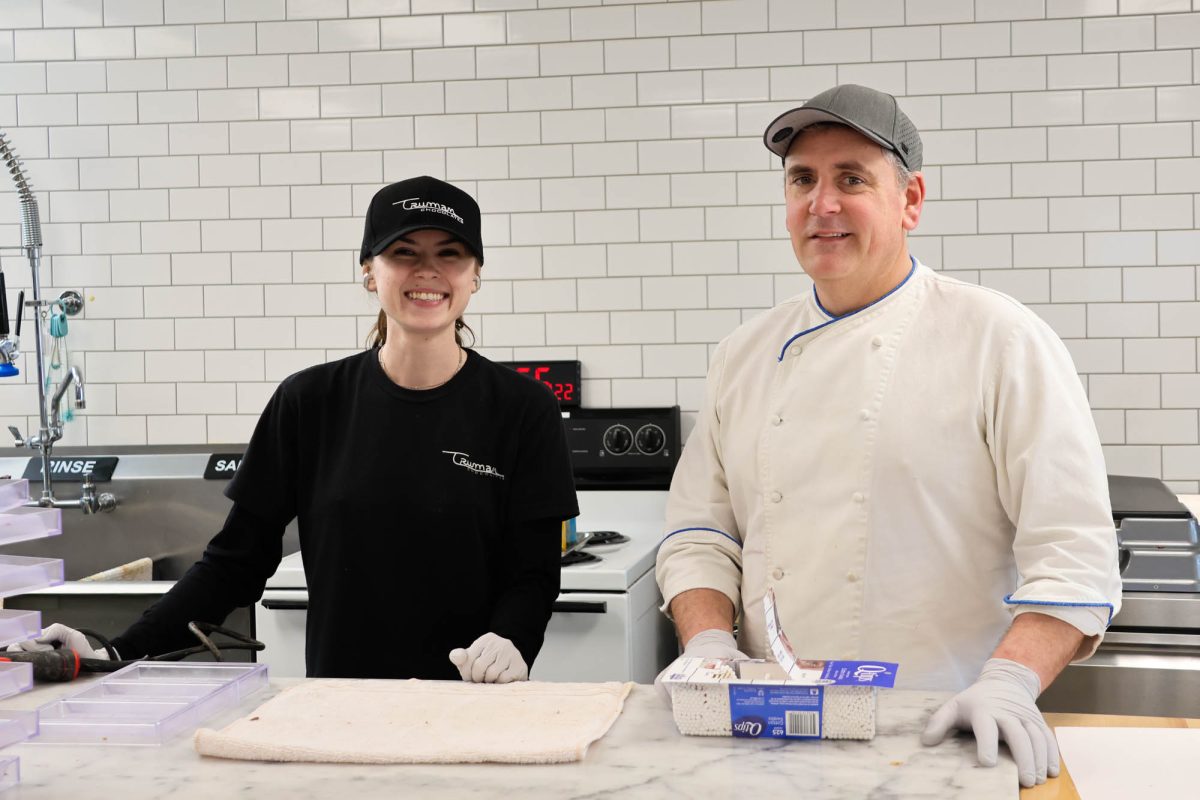

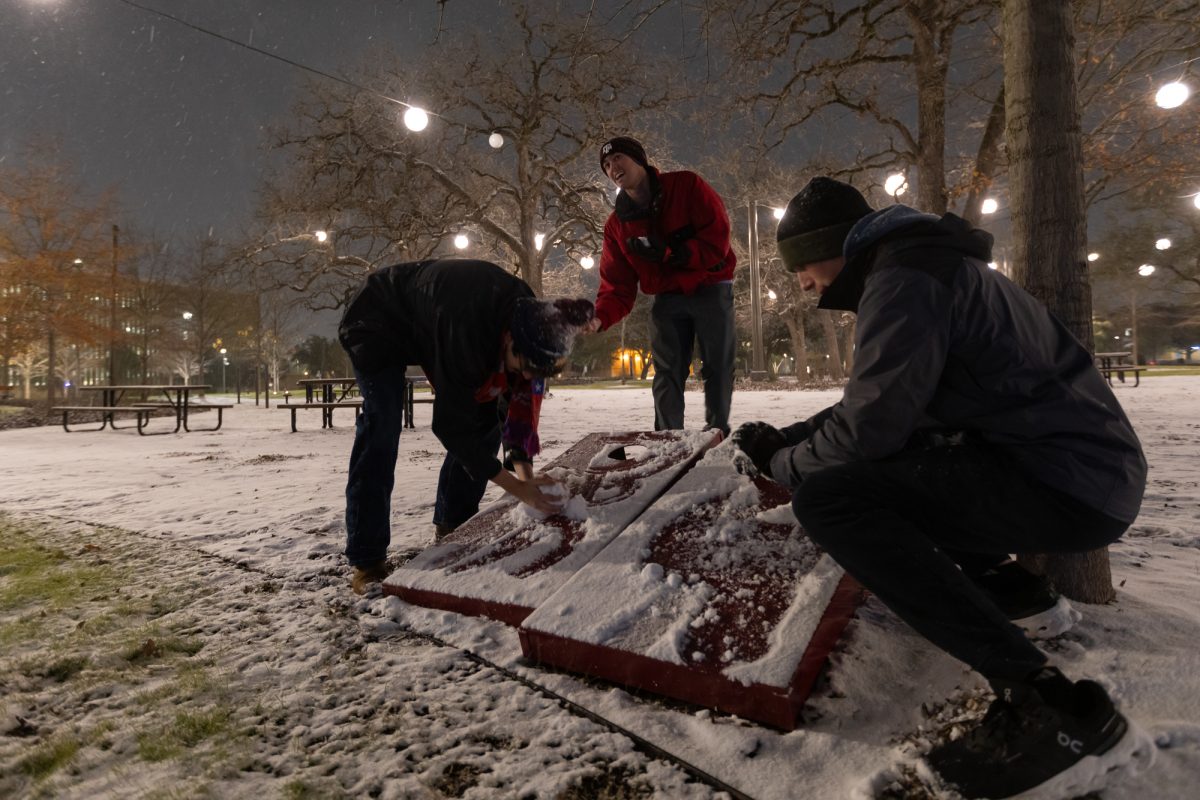
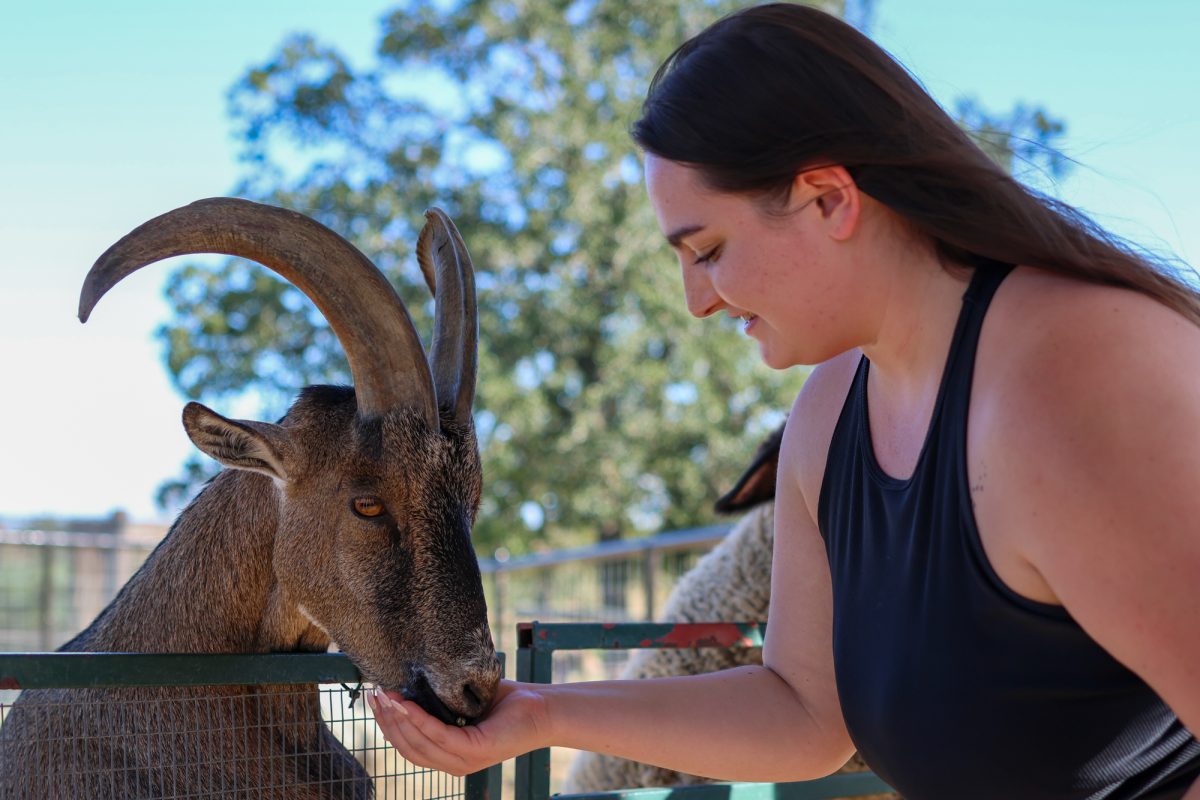
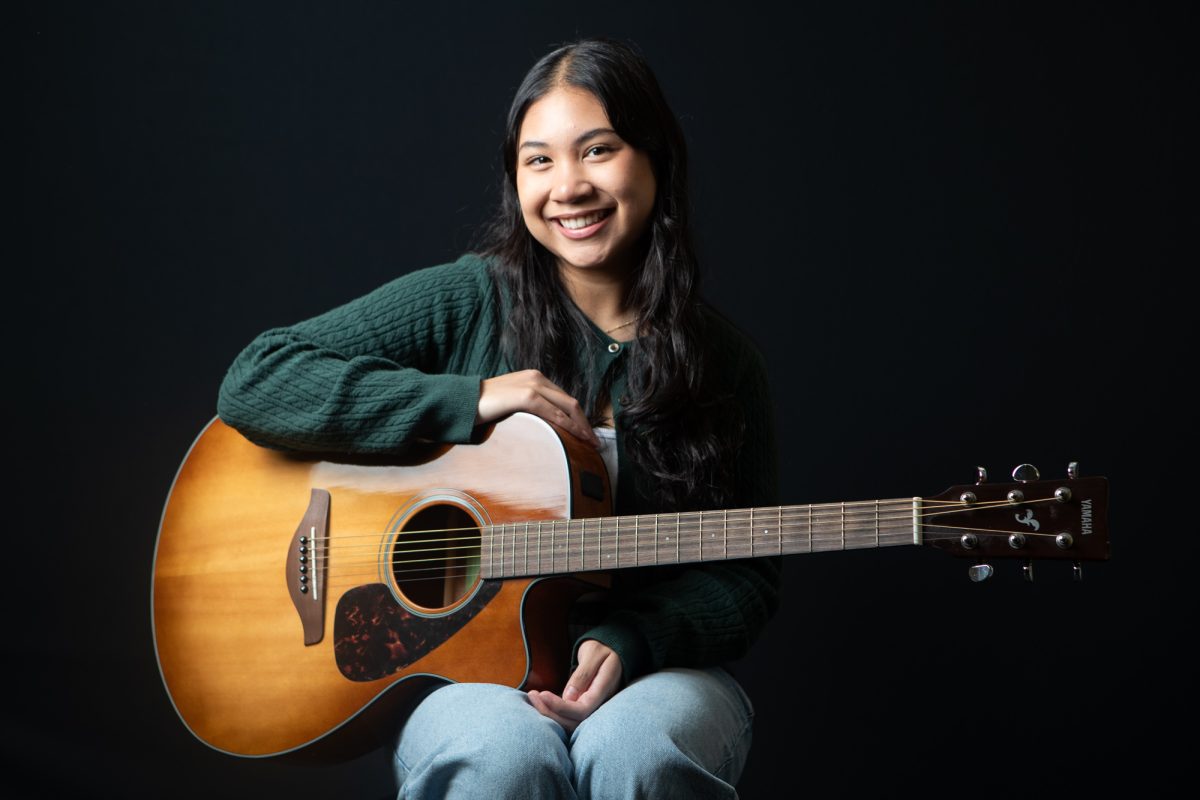

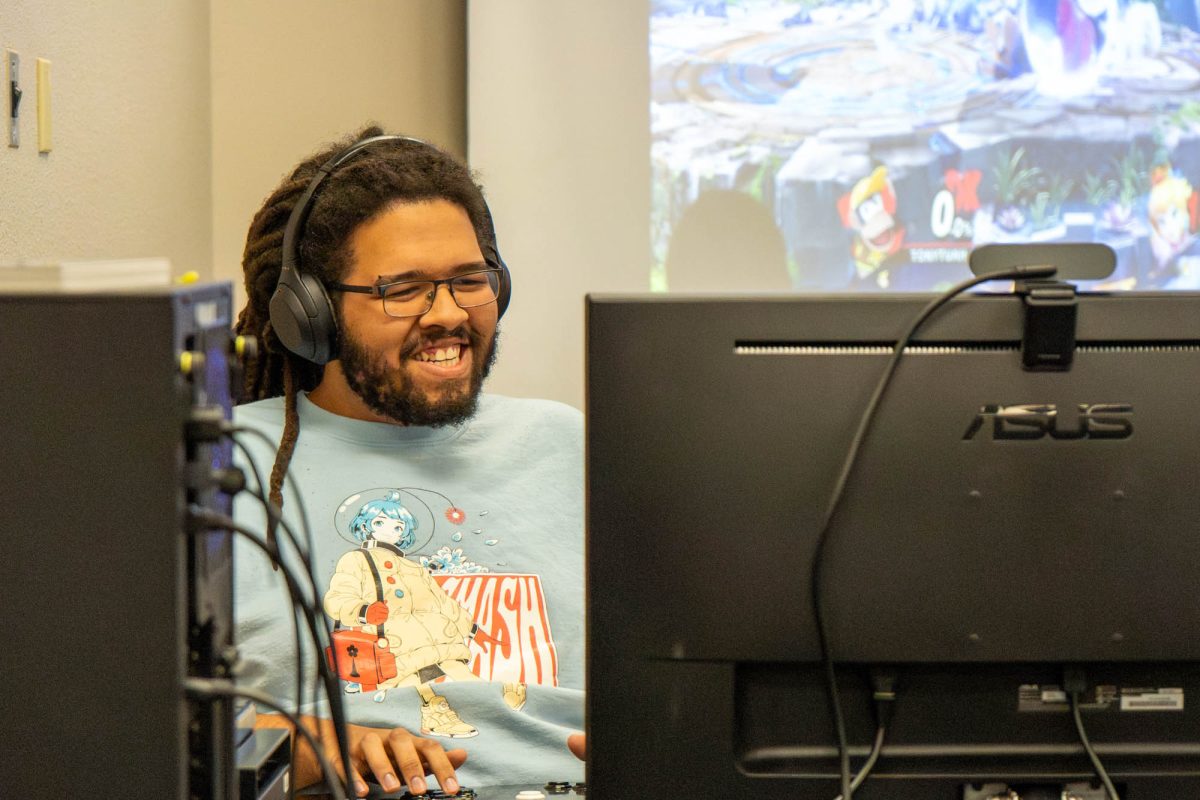

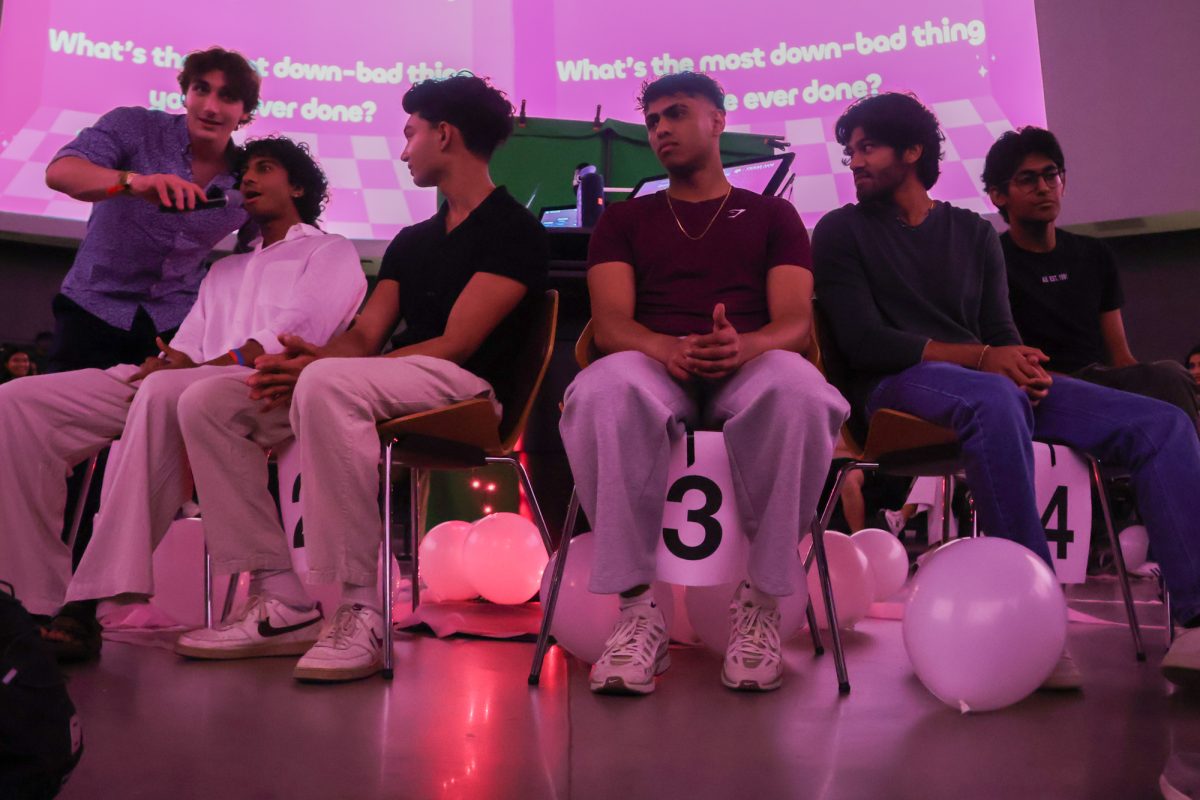
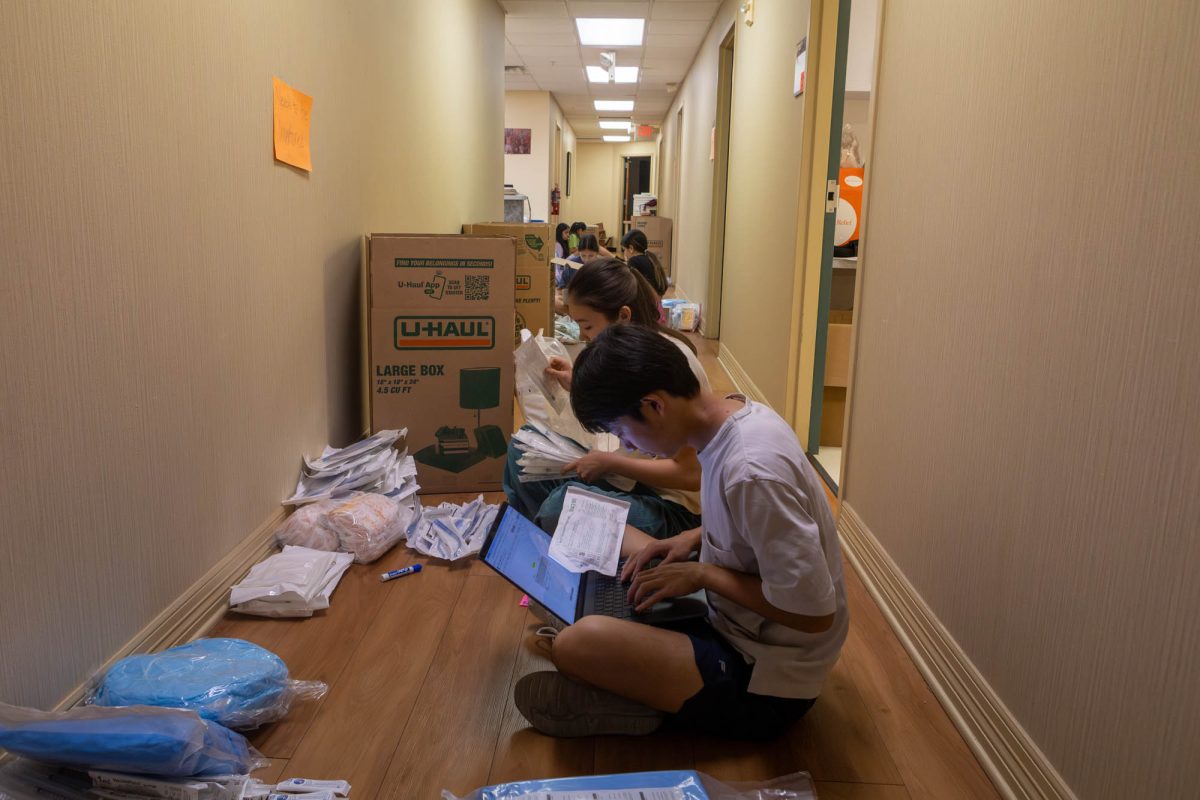

Sam ‘89 • Jul 19, 2024 at 7:49 pm
Notice how specific these memories of Bob Rogers are even though the events are 30, 40 even 50 years ago? How many other professors remain so fixed in the minds of their former students?
To this day when I see First Annual on some promotion flyer I think of Bob Rogers – he would explain it can be First or Annual, but not First Annual as it’s not annual until the second year. Inaugural is okay. First annual is not.
It was one of Bob’s journalistic pet peeves.
I suppose I experienced some transference!
Bob Rogers was an amazing journalist, teacher and human being and we were all fortunate to have known him.
Kris Leabo • Jul 17, 2024 at 1:14 pm
Bob Rogers was one of my father’s closest colleagues, helping to build the TAMU Journalism Department basically from the ground up in the late 60s and early 70s. But more so, Bob and Pattie were perhaps some of our dearest family friends, treating me and my siblings as if we were their own—hard life lessons and all! Truly a legend.
Andy Williams • Jul 16, 2024 at 9:27 pm
He was the son of a pharmacist in Marlin and a huge baseball fan. He was Phi Beta Kappa as an anthropology undergrad at some (alleged) university in Austin. I had to dig to learn those things. He was a great man without the great man complex. He didn’t talk a lot about himself.
But Lord, he was wise. I was managing editor of The Batt and graduated in 1980. Frequently, when he said something about what we had written, it presented the subject in a completely new light, from some perspective we hadn’t seen at all while we were assigning, covering, writing and editing an article. When he did that, it only took an instant to realize, “Oh, hell. He’s right. And we never thought of what he saw immediately. ”
He had a nice easy touch when he needed to. He criticized something one day. “Not my job,” I said. “Just what is your job?” he replied. Man, was I ashamed. I hope and think I dropped that attitude immediately. My job was to make sure we got it right and gave all sides a fair shake.
He was a wonderful mentor and it’s not too much to say that we all loved him. Rest in peace, Mr. Rogers. You earned it.
Eric Evan Lee • Jul 19, 2024 at 12:25 pm
He was an excellent teacher, and with Skip Leabo, they made a great team. I feel lucky to have had the opportunity to learn from them.
Paul McGrath • Jul 16, 2024 at 3:17 pm
And Bob would raise his eyeglasses and shake his head, knowing that my last name is McGrath, not McGarth. Right, Bob?
Don Tomlinson • Jul 16, 2024 at 2:57 pm
I joined the Journalism faculty in August 1985 to teach Media Law when Bob left to be editor at The Eagle. But before he left, he had to “approve” of who was taking his place teaching that course. To this day, I am honored he “approved” me. And, of course, I was delighted when he returned as department head a few years later. His wife, Patty, helped me find a home for my family the day I was hired (after all, it was mid-August). Bob was a fine man, all around. i echo the sentiments of Lyle and Loren and others.
Connor • Jul 16, 2024 at 1:08 pm
Such a good article. I love seeing these people dedicated to their craft, and not only that, but inspiring others to chase their paths as well. It’s awesome that Lyle Lovett commented for this article!!!!